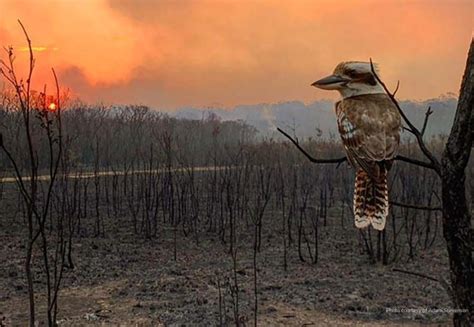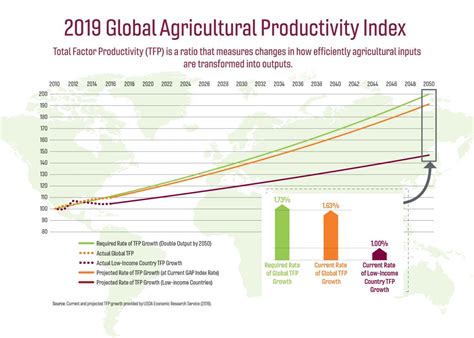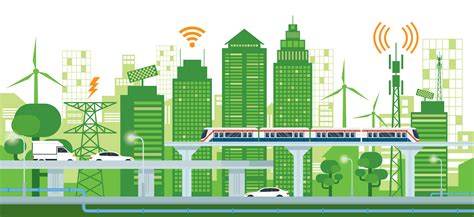In the vast landscape of Australia, a vision is emerging. A vision that transcends traditional notions of development and embraces a future that is not only sustainable but also harmonious with nature. It's a vision that seeks to redefine the very fabric of our society, empowering individuals and communities to take collective action towards a greener and more environmentally conscious future.
Unlocking the true potential of Australia's diverse ecosystems, this vision aims to foster a deep connection with the natural world. It is a call to embrace innovative ideas and alternative approaches to address the pressing environmental challenges we face. In this vision, sustainability is not merely a buzzword, but a living, breathing ethos that permeates every aspect of our lives.
What does this vision entail? It entails a shift in mindset, where environmental stewardship becomes a shared responsibility. It means reimagining our urban landscapes to prioritize green spaces and biodiversity. It means harnessing renewable energy sources and investing in sustainable transportation systems that reduce our carbon footprint. It means cultivating a generation of eco-literate individuals who understand the significance of living in harmony with our surroundings.
This vision rejects the notion that economic progress must come at the expense of the environment. Instead, it champions the idea that a thriving and prosperous Australia can coexist with a healthy and vibrant natural world. It is an invitation to think outside the box and explore new and innovative ways of achieving sustainable development.
The Current Status of Australia's Environment: Challenges and Opportunities

Australia is facing numerous challenges in relation to its environment. These challenges arise from a combination of factors, including population growth, urbanization, climate change, and unsustainable resource consumption. However, amidst these challenges, there are also opportunities for sustainable development and a brighter future.
- 1. Biodiversity Loss: Australia is known for its unique and diverse ecosystems, but it is also experiencing a rapid loss of biodiversity. Habitat destruction, invasive species, pollution, and climate change are all contributing to this alarming trend. Conservation efforts and the protection of endangered species present opportunities to address this issue and promote ecological sustainability.
- 2. Water Scarcity: Australia is the driest inhabited continent on Earth, and water scarcity is a major concern. With increasing population and competing demands for water resources, sustainable water management practices can help address this challenge. Implementing water conservation measures and investing in water infrastructure can ensure the availability of this vital resource for future generations.
- 3. Energy Transition: Australia relies heavily on fossil fuels for its energy needs, contributing to greenhouse gas emissions and climate change. However, there is immense potential for renewable energy sources, such as solar, wind, and geothermal, to play a larger role in the country's energy mix. Investing in renewable energy technologies can help reduce emissions and create a more sustainable energy future.
- 4. Land Degradation: Unsustainable agricultural practices, deforestation, and soil erosion are leading to land degradation in Australia. This poses a threat to ecosystems, food security, and rural livelihoods. Implementing sustainable land management practices, such as regenerative agriculture and reforestation programs, can help restore the health and productivity of the land.
- 5. Waste Management: Australia generates a significant amount of waste, and proper waste management is crucial for environmental sustainability. Adopting a circular economy approach that focuses on reducing, reusing, and recycling can minimize waste and its negative impacts on the environment. This presents an opportunity to create a more efficient and resource-conscious society.
In conclusion, the current state of Australia's environment presents both challenges and opportunities. By addressing issues such as biodiversity loss, water scarcity, reliance on fossil fuels, land degradation, and waste management, Australia can pave the way for sustainable development and a greener future.
Utilizing Australia's Renewable Energy Potential
Australia has an abundance of natural resources that can be effectively harnessed to meet the country's growing energy needs. This section explores the wide range of renewable energy sources available in Australia and their potential to contribute to a sustainable future.
One of the most promising renewable energy sources in Australia is solar power. With its vast sunshine exposure, the country holds immense potential for the wide-scale implementation of solar energy systems. Harnessing the power of the sun can not only reduce dependence on fossil fuels but also contribute to the reduction of greenhouse gas emissions. Moreover, solar power has the advantage of being modular and scalable, making it suitable for various applications from residential to industrial.
Another significant renewable energy source in Australia is wind power. The country's vast coastline and expansive landscapes offer ample space for the installation of wind turbines, allowing for the generation of clean and sustainable electricity. Wind power has the advantage of being highly scalable, with both large-scale wind farms and small-scale community-owned turbines contributing to the energy mix. By capitalizing on Australia's wind resources, the nation can significantly reduce its carbon footprint while diversifying its energy portfolio.
In addition to solar and wind, Australia also possesses substantial geothermal resources. Geothermal energy harnesses the heat stored in the Earth's crust to generate electricity or provide heating and cooling solutions. With its geologically active areas, such as the Great Artesian Basin and the Cooper Basin, Australia has the potential to leverage geothermal energy for sustainable development. By tapping into this underground heat, Australia can further reduce reliance on traditional energy sources and unlock a powerful renewable energy option.
| Renewable Energy Source | Potential Benefits |
|---|---|
| Solar Power | Reduced dependence on fossil fuels, lower greenhouse gas emissions, scalability |
| Wind Power | Clean and sustainable electricity, diverse energy portfolio, potential for community ownership |
| Geothermal Energy | Diversification of energy sources, reduced reliance on traditional fuels, tapping into underground heat |
By harnessing the potential of these renewable energy sources, Australia can move towards a more sustainable future, characterized by reduced carbon emissions, enhanced energy security, and economic growth. Investment in renewable energy infrastructure and research and development initiatives will be crucial in unlocking the full potential of these resources and paving the way for a greener and more prosperous Australia.
Sustainable Agriculture: Unlocking the Potential to Nourish a Thriving Population

As the world's population continues to grow at an unprecedented rate, the need for sustainable agriculture has become more pressing than ever. With the demand for food escalating, it is essential to explore innovative approaches that can meet these demands while also preserving our planet's resources.
One key aspect of sustainable agriculture is maximizing crop production without depleting the soil's fertility or endangering the environment. This requires implementing eco-friendly farming practices that prioritize the long-term health of the land and its ecosystems. By utilizing organic fertilizers, rotating crops, and employing precision irrigation methods, farmers can enhance their yields while minimizing the use of harmful chemicals.
Furthermore, sustainable agriculture emphasizes the importance of biodiversity in our farming systems. Instead of relying on monoculture, where vast areas are dedicated to a single crop, embracing a diverse range of crops and incorporating agroforestry techniques can provide a multitude of benefits. These practices promote natural pest control, reduce soil erosion, and enhance the overall resilience of our agroecosystems.
In addition to environmental sustainability, the social and economic aspects of agriculture must also be considered. Supporting small-scale farmers and empowering local communities is crucial for creating a sustainable food system. By promoting fair trade practices, fostering rural entrepreneurship, and investing in agricultural education, we can build a more inclusive and resilient agricultural sector.
Amidst the challenges we face in feeding a growing population, sustainable agriculture offers a ray of hope. By harnessing the power of nature, adopting innovative technologies, and prioritizing the well-being of both our planet and its inhabitants, we can pave the way towards a future where food security is not compromised by ecological degradation.
| Benefits of Sustainable Agriculture |
|---|
| Preserves soil fertility and health |
| Minimizes the use of harmful chemicals |
| Enhances biodiversity and ecosystem resilience |
| Promotes natural pest control |
| Reduces soil erosion |
| Fosters social and economic inclusivity |
Conservation and Biodiversity: Safeguarding Australia's Distinctive Ecological Systems
Australia's magnificent landscapes and unique flora and fauna are renowned worldwide. This section delves into the critical subject of conservation and biodiversity, focusing on the essential task of preserving and protecting the diverse ecosystems that make Australia so singular and extraordinary.
Preserving Australia's distinctive ecological systems requires a dedicated commitment to safeguarding the rich biodiversity present within its borders. The vast array of species native to the continent face numerous challenges, such as habitat degradation, climate change, and invasive species. Efforts to conserve these ecosystems are essential for maintaining the delicate balance that sustains Australia's unique biodiversity.
Biodiversity, a term encompassing the variety of life on Earth, is crucial for the overall health and functioning of ecosystems. The Australian continent boasts an incredibly diverse range of habitats, ranging from lush rainforests and expansive deserts to vibrant coral reefs. Within these landscapes, an abundance of species, including marsupials, eucalyptus trees, and brightly colored parrots, have evolved and adapted over millions of years.
Conservation, on the other hand, is the purposeful action taken to protect and preserve natural resources, including the extraordinary biodiversity found in Australia. Conservation efforts encompass a wide range of activities, including habitat restoration, species management, and the establishment of protected areas. These actions play a vital role in alleviating the threats faced by Australia's ecosystems and ensuring their continued survival for future generations.
The preservation of Australia's unique ecosystems is not only vital for the country's natural heritage but also holds significant economic and social value. Many species and ecological communities provide essential ecosystem services that humans directly rely upon, such as pollination, water purification, and climate regulation. Additionally, Australia's stunning natural landscapes and diverse wildlife attract tourists from around the globe, contributing to the country's economy and promoting cultural exchange and understanding.
In this section, we will explore the myriad of initiatives, both government-led and community-driven, working towards safeguarding Australia's distinctive ecosystems. We will delve into the various strategies employed to protect threatened species, restore degraded habitats, and raise awareness about the importance of biodiversity conservation. By showcasing successful case studies and highlighting ongoing challenges, this section aims to inspire action and foster a deeper understanding of the crucial role each individual can play in preserving Australia's natural heritage.
Creating Intelligent Urban Environments: Building Sustainable and Livable Cities

In this section, we will delve into the concept of smart cities and their potential to transform urban spaces into sustainable and livable environments. Smart cities aim to integrate advanced technologies, data-driven decision-making, and sustainable practices to address the challenges of urban growth and offer high-quality living conditions for their residents.
- Empowering Sustainable Mobility: Smart cities leverage technologies such as intelligent transportation systems, electric vehicles, and bike-sharing programs to promote eco-friendly and efficient modes of transportation. By prioritizing public transportation, pedestrian-friendly infrastructures, and creating interconnected networks, cities can reduce traffic congestion, air pollution, and carbon emissions.
- Optimizing Resource Management: Through the implementation of smart grids, efficient energy management systems, and waste management strategies, cities can reduce their environmental impact and achieve long-term sustainability. Smart technologies enable the monitoring and optimization of resource consumption, thereby minimizing waste generation and improving overall energy efficiency.
- Promoting Citizen Engagement: Smart cities foster active participation and collaboration between residents and local authorities. By utilizing digital platforms and mobile applications, citizens can access real-time information about public services, provide feedback, and actively contribute to decision-making processes. This engagement promotes transparency, inclusivity, and empowers individuals to actively participate in shaping their city's development.
- Enhancing Urban Safety and Security: Smart cities employ advanced surveillance systems, sensor networks, and data analytics to enhance public safety and emergency response. From smart street lighting and real-time monitoring of critical infrastructure to predictive policing and intelligent emergency services, these technologies contribute to creating safer urban environments for residents and visitors.
- Fostering Sustainable Economy: Smart cities stimulate innovation, entrepreneurship, and create opportunities for sustainable economic growth. By nurturing digital industries, supporting start-ups focused on green solutions, and developing smart infrastructure, cities can attract investments, create jobs, and drive the adoption of sustainable business practices.
By integrating cutting-edge technologies, data-driven approaches, and sustainable principles, smart cities have the potential to revolutionize urban living. This section will dive deeper into the specific strategies, case studies, and implementation challenges that come with designing sustainable and livable urban spaces in the pursuit of a greener future.
Economic Advantages of Embracing Sustainability in Building a Greener Australia
In this section, we will explore the various ways in which adopting sustainable practices can lead to economic benefits for Australia. By integrating environmentally-friendly initiatives into different sectors of the economy, Australia can achieve long-term financial prosperity while preserving its natural resources and protecting the environment for future generations.
1. Boosting innovation and creating new job opportunities: Embracing sustainability encourages innovation in industries such as renewable energy, green technology, and eco-friendly products. This innovation not only helps to address environmental challenges but also stimulates economic growth by creating new job opportunities across various sectors.
- Investing in research and development of sustainable solutions
- Promoting entrepreneurship and start-ups in green industries
- Building a skilled workforce to meet the demand of sustainable jobs
2. Enhancing energy efficiency: Transitioning to a greener economy involves improving energy efficiency in all sectors, which can lead to substantial cost savings for businesses and households. By investing in energy-efficient technologies, companies can reduce energy consumption, lower operating costs, and increase their competitiveness in the global market.
- Implementing energy-saving practices in manufacturing processes
- Encouraging the use of renewable energy sources
- Providing incentives for energy-efficient retrofits in buildings
3. Preserving natural resources for sustainable resource management: Embracing sustainability involves responsible management of natural resources, such as water, forests, and biodiversity. By adopting sustainable practices in resource extraction and utilization, Australia can ensure the long-term availability of these resources while minimizing environmental degradation and preserving ecosystem services.
- Implementing sustainable logging practices in forestry
- Integrating water-saving technologies in agriculture
- Protecting and conserving biodiversity-rich areas for ecotourism
4. Gaining a competitive advantage in international markets: As global awareness of environmental issues increases, there is a growing demand for sustainable products and services. By positioning itself as a leader in sustainability, Australia can attract international investments, boost exports of eco-friendly goods, and establish itself as a preferred destination for responsible tourism.
- Promoting certifications and labels for sustainable products
- Developing marketing campaigns emphasizing Australia's commitment to sustainability
- Encouraging sustainable practices in the tourism industry
The economic benefits of embracing sustainability are clear. By transitioning to a greener economy, Australia can not only protect its unique natural environment but also secure long-term economic prosperity for its people.
FAQ
What is the main focus of the article?
The main focus of the article is exploring the possibilities for sustainable development in Australia.
Why is sustainable development important?
Sustainable development is important because it aims to meet the needs of the present without compromising the ability of future generations to meet their own needs. It ensures the preservation of natural resources and the environment for long-term benefits.
What are some challenges faced in achieving sustainable development in Australia?
Some challenges faced in achieving sustainable development in Australia include balancing economic growth with environmental and social factors, managing overconsumption and waste, transitioning to renewable energy sources, and ensuring community participation and support.



